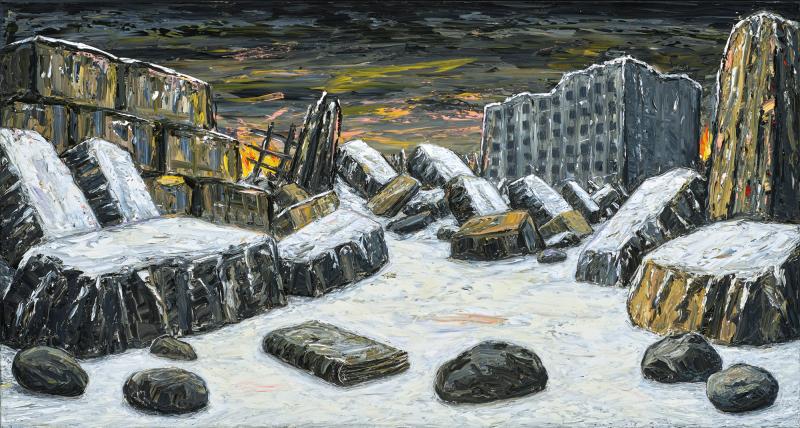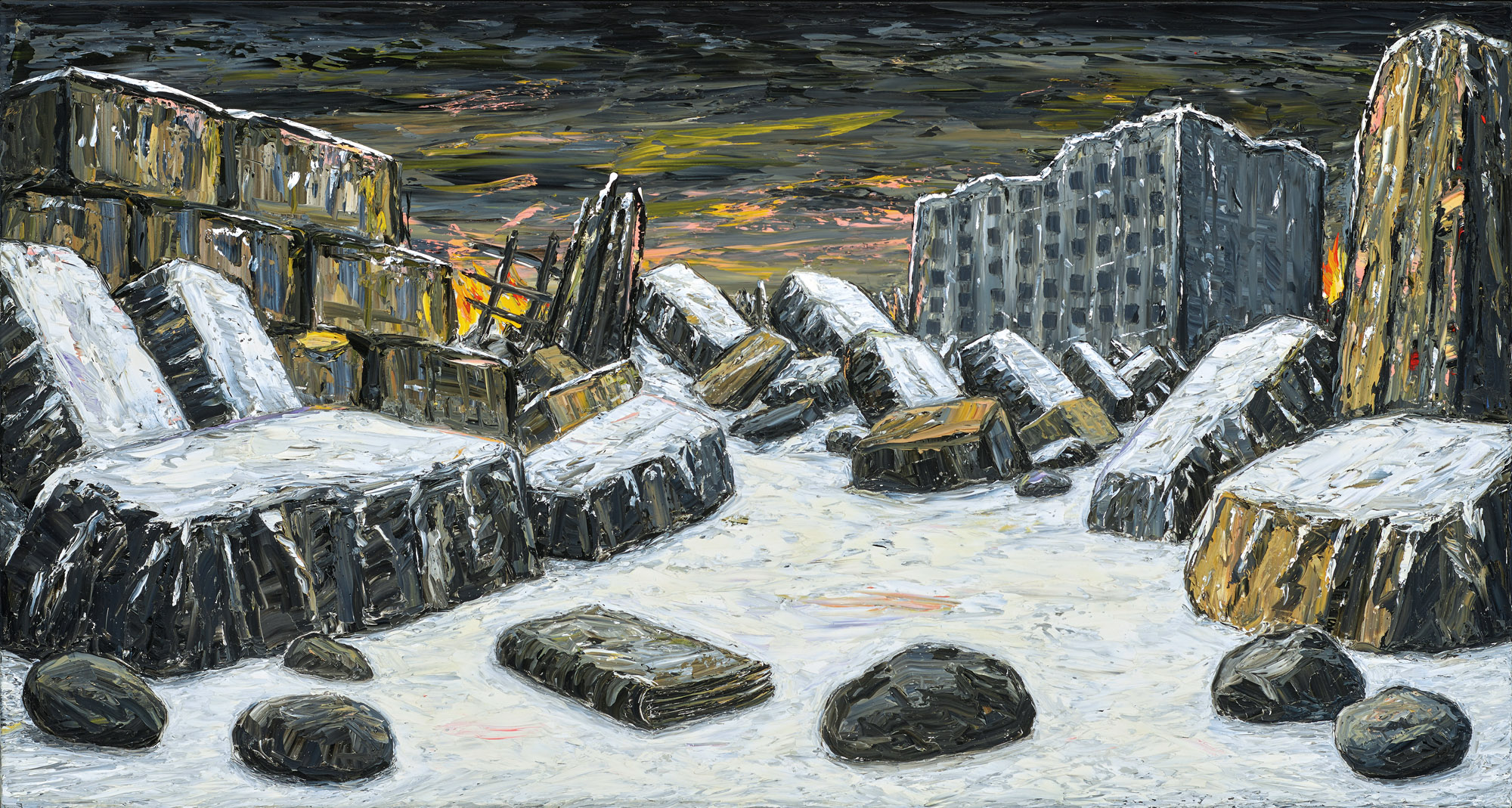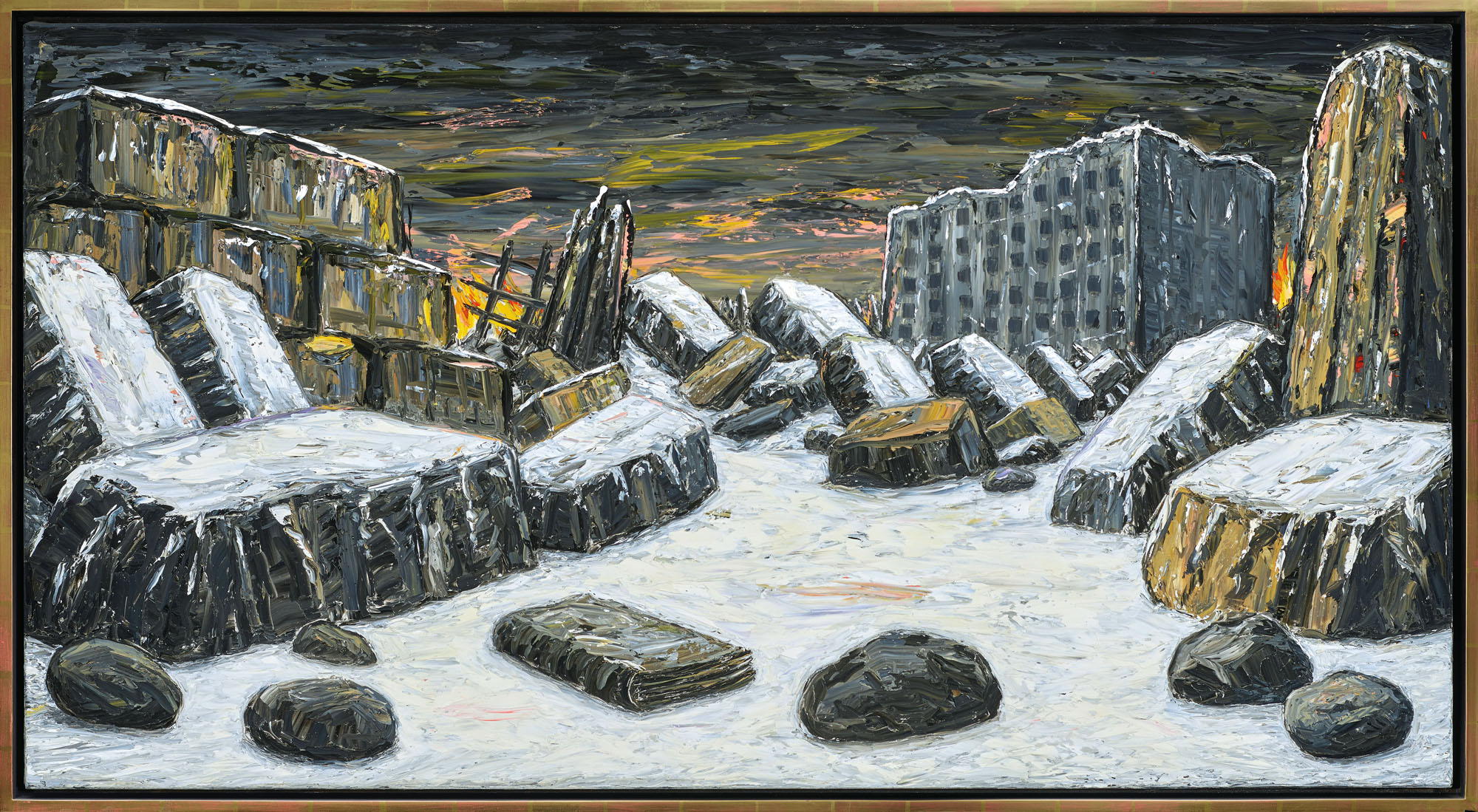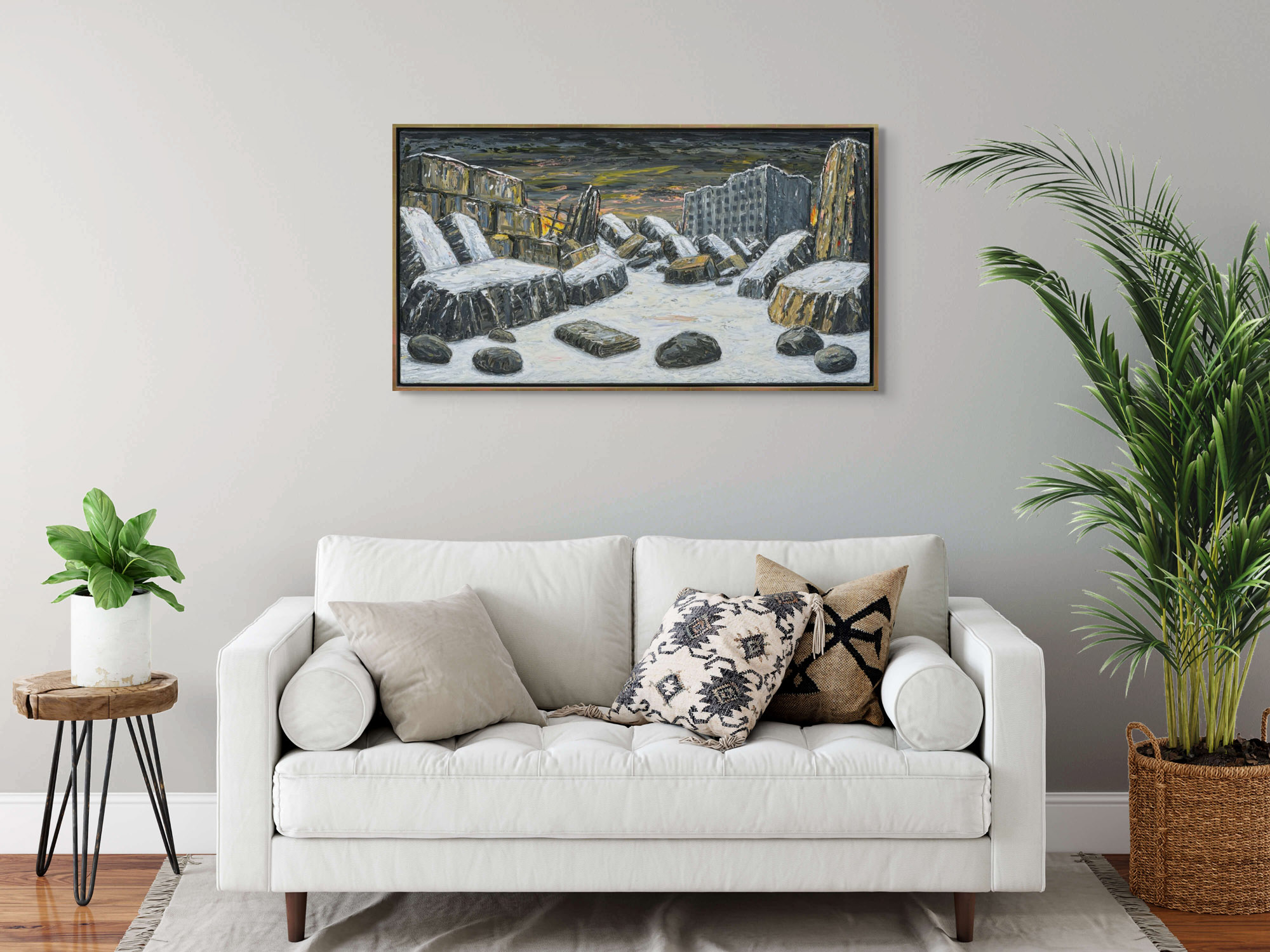PETER BOOTH born 1940
Winter Landscape with Burning City 2001
Estimate: $55000 - 75000
Sold For:
$64000 hammer
$78545 inc. buyer's premium
Description
PETER BOOTH born 1940
Winter Landscape with Burning City 2001
oil on canvas
76.0 x 142.0 cm; 81.5 x 147.0 cm (framed)
signed and dated verso: Peter Booth 2001
Provenance:
Rex Irwin Art Dealer, Sydney, 2003
The Gandel Collection, Melbourne
Christie's, Sydney, 23 August 2004, lot 15
The BHP Billiton Collection of Australian Art, Melbourne
Menzies, Sydney, 19 November 2020, lot 45
Private collection, Melbourne
Exhibited:
Peter Booth, Rex Irwin Art Dealer, Sydney, 24 June - 19 July 2003, cat.7
Estimate: $55000 - 75000
Result Hammer: $64000
Peter Booth is one of Australia’s most prominent and exciting late twentieth century artists. When the National Gallery of Victoria exhibited the retrospective Peter Booth: Human/Nature in 2003, the then deputy director, Frances Lindsay, stated that Booth had achieved, ‘a central position along with artists such as Sidney Nolan (1917-1992) and Fred Williams (1927-1982), who have changed our understanding of the world and our place in it.’1 Known for his intense figurative and surrealist scenes riddled with mysterious narratives and esoteric symbolism, his apocalyptic snow paintings are his most renowned, and Winter Landscape with Burning City 2001 is a prime example.
Booth was born in 1940 in Sheffield, known as the steel production centre of the world, in England’s industrial north. Booth’s father worked in the steel mills that dominate not only the city’s skyline, but also clearly Booth’s mind some fifty years later. These childhood memories of the flames from the steel mill furnaces illuminating the dark night sky form a theatrical backdrop for the littered industrial landscape we see here. In his catalogue essay, curator Jason Smith notes that, ‘Sheffield is one of the primary sources for Booth's depiction of winter landscapes.’2 Smith goes on to explain that while these winter landscapes may seem apocalyptic and somewhat sinister, for Booth ‘the winter landscape is one of serenity and the promise of renewal. It reminds us of the resilience of nature and is a metaphor for human endurance against the physical and psychological trails of life.’3
Booth draws inspiration from his memories and observations of the world around him, in conjunction with the complex realm of his internal imagination. While memory plays a major role in shaping his work, so does his deep interest in literature, represented in the present work by the large book lying in the snowy foreground, easily mistaken as another rock at first glance. These winter landscapes mark a turning point in Booth’s oeuvre, moving away from the disturbing, monstrous figures of his 1980s works. Booth compares this shift with the journey in the epic poems Paradise Lost 1667 and Paradise Regained 1671 by 17th-century English poet John Milton (1608–1674). More specifically, the winter landscape series was inspired by Shakespeare’s Macbeth, in which the titular character’s moral and political corruption represent unnatural violations of the natural order – akin to the struggle seen here between nature’s harsh winter and man’s industrialisation of the land.
In another nod to the famous playwright, and to literary narrative on the whole, Winter Landscape with Burning City resembles an empty stage set for a dramatic performance that is either about to begin or has just ended. The lack of figures, a point of difference to his previous figurative works, infuses the painting with a profound sense of mystery and anticipation. Perhaps what we are really anticipating is the sweet relief of spring to soften this harsh scene, verifying the resilience of nature and the endurance of mankind, as noted by Smith earlier. Or as Booth put it himself, ‘I am very pessimistic about the plight of beings… One thing I am not pessimistic about is the ability of nature to heal itself.’4
Footnotes
1. ‘View from the Booth’, The Age, Melbourne, 29 November 2003
2. Smith, J., Peter Booth: Human / Nature, National Gallery of Victoria, Melbourne, 2003, p.14
3. Ibid, pp.14-15
4. ‘View from the Booth’, The Age, Melbourne, 29 November 2003
Asta Cameron
Specialists
-

Cameron Menzies, Chairman & Head of Private Sales
cmenzies@menziesartbrands.com
+61 (0) 466 636 142 -

Asta Cameron, Art Specialist
acameron@menziesartbrands.com
+61 (0) 400 914 088 -

Clementine Retallack, Front of House Manager & Associate Art Specialist
cretallack@menziesartbrands.com
+61 (0) 478 493 026
Location
Sale & Exhibition Details
-
Auction
27 March 2024
6:30PM AEDT
1 Darling Street
SOUTH YARRA VIC 3141
artauctions@menziesartbrands.com -
Exhibition
-
Sydney
14-17 March 2024
10:00AM to 5:00PM AEDT
12 Todman Avenue
KENSINGTON NSW 2033
art@menziesartbrands.com -
Melbourne
21-26 March 2024
10:00AM to 5:00PM AEDT
1 Darling Street
SOUTH YARRA VIC 3141
artauctions@menziesartbrands.com
-



